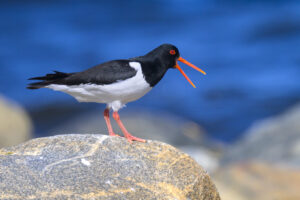Eurasian Oystercatcher
Former telemetry-based studies on the Eurasian Oystercatcher have shed light on breeding and wintering habitat choice and migration routes (van der Kolk et al. 2022), habitat use patterns of intertidal flats, and foraging trip characteristics during the breeding period at different breeding locations (Schwemmer et al. 2016). The quality of the breeding site was found to be highly related to the location of the foraging territories on the mud flats (Schwemmer et al. 2017).

Between
and
Loading
